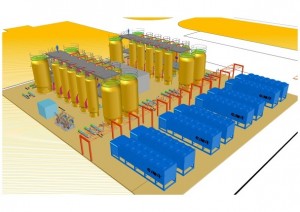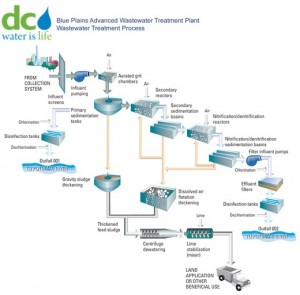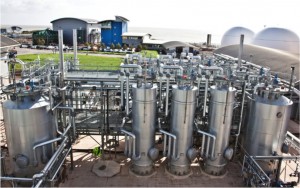For those of us who follow energy issues closely, a long-standing, persistent question has been: Are methane hydrates for real? Are they a realistically large potential energy resource? The answer seems to be yes.
Thirty years ago the information available to answer these questions was not available. Today the literature on methane hydrates (also known as methane clathrates, methane ice, fire ice) is extensive and growing. This blog post attempts to capture the main points I came away with in a detailed review of the subject. To this energy wonk it was both fascinating and disturbing – fascinating in nailing down a lot of details about a potentially new and very large energy resource, and disturbing in that it again raises serious concerns for me about our lack of a national energy policy. I will explain further.
First a word about clathrates and hydrates: clathrate is a general term that describes solids in which gases are trapped within any kind of chemical cage, while hydrate is the specific term used when that cage is made of water molecules. In methane hydrates the trapped gas is methane, the principal constituent of natural gas and the simplest known hydrocarbon (CH4). CO2 and other gas hydrates are also possible and are speculated to exist on Mars, other planets and their moons. On our home planet most of the hydrates are filled with methane, and there is lots of it.
Methane hydrates form as a solid similar to ice under the right conditions of methane and water availability, temperature (low) and pressure (high).
They are fragile, easily destabilized (i.e., returning to separated water and no-longer-trapped CH4) by pressure and/or temperature changes, and are found most often within, and occasionally on top of, sediments on the ocean floors. They are called ‘fire ice’ because they can be lit by a match:
The most common type of methane hydrate (>99%) has a density of 0.9gm/cc or just slightly less than that of water, so it can float. One liter of the fully saturated solid would yield 120 grams of methane or 169 liters of gas at standard temperature and pressure. It forms in the presence of water and methane under conditions found in the oceans, deep lakes, and under ice caps that fall within a gas hydrate stability zone defined by the following phase diagram:
The seafloor of most of the world’s oceans fall within the hydrate stability zone. Methane hydrates are also found in Arctic permafrost and continental deposits in sandstone and limestone in Alaska and Siberia. These deposits may cover even larger reservoirs of methane gas beneath.
There are two sources for this methane: thermogenic methane that is formed deep in the earth by the same thermal/high pressure processes that convert organic matter to coal, oil and gas and which leaks upward toward the ocean floor where it forms hydrates when it comes in contact with highly pressurized cold (0-2C) water; and methane generated by microbes degrading organic matter (plankton) in low oxygen environments in sediments. This latter process is the dominant source of CH4 for methane hydrates.
Why are methane hydrates important? The DOE’s Energy Information Administration estimates that such hydrates contain more carbon (and therefore more potential fuel) than all other fossil fuels combined. It also reports that these hydrates could hold as much as 10,000-100,000 trillion cubic feet (Tcf) of natural gas. To put these numbers into perspective, total global consumption of natural gas is currently 120 Tcf. We are talking about a LARGE potential energy resource.
It is also widely distributed as shown in the following map and has the potential to be an indigenous resource for many countries:
It is also straightforward to separate the methane from its hydrate cage by heating it up or reducing its pressure. Both techniques have been demonstrated and are currently being explored actively in public and private research programs in many countries. The production problems arise when one tries to convert this resource into a marketable commodity at a reasonable cost. There are also serious environmental questions about methane hydrates because methane is a powerful greenhouse gas in its own right and releases CO2, another greenhouse gas, when it is burned. Both issues are discussed below.
The presence of most of the hydrates on the deep sea floor and in sediments just beneath it means that extraction must be carried out under extreme conditions of depth, pressure and temperature. The methane concentrations are also spread out, increasing the harvesting costs, undersea infrastructure costs, and transmission costs of bringing the gas to the surface. The fragility of the hydrates also requires that they be handled carefully, avoiding a sudden release of gas and resultant overpressurization.
The environmental problems reflect concern about methane’s strong greenhouse gas properties (20 times more effective at trapping heat than CO2) and, when oxidized (either by combustion or aerobic conversion), that it releases CO2, another, although less powerful, greenhouse gas. A saving grace is that in its pure CH4 form in the atmosphere methane’s half life is 7.5 years. CO2 on the other hand has an atmospheric half life of hundreds of years. Leakage of methane from pipelines and other infrastructure is also a concern, as it is for other sources of natural gas.
Another problem for methane production from hydrates is the fact that shale gas via fracking is just coming into its own as a major source of competitive natural gas, thus reducing the commercial incentive to develop the hydrates. Unless the cost of producing methane from hydrates can be reduced significantly this will remain an important barrier as long as shale gas is available in quantity.
The U.S. is one of several countries with an active methane hydrate R&D program. Others include Russia, India, S. Korea and Japan. Japan has been a leader in this research for many years, given its lack of indigenous energy resources and its heavy dependence on imports. Japan’s recent problems with its nuclear power plants has further increased its dependence on imported LNG and its associated costs, which are very high in the Asian market (roughly 3-4 times higher than in the U.S. market).
The U.S. program was jump-started by the passage of The National Methane Hydrates R&D Act of 2000, which requires “the development of a national methane hydrate R&D program that utilizes the talents of federal, private, and academic organizations.” The result is a joint public-private effort supported collaboratively by quite a few U.S. government departments and agencies: USGS, BLM, DOE, DOI, BOEMRE, NOAA, NRL, and NSF. Several National Laboratories (NETL, ORNL,..) are also heavily engaged.
Major arguments in favor of developing methane hydrates are the fact that it is an indigenous resource, thus enhancing national security and potentially reducing energy import costs, and the fact that natural gas can be substituted for coal in electric power plants, thus reducing carbon emissions per unit of energy produced. These are strong arguments, but raise the concern that investments in natural gas will reduce U.S. investments in energy efficiency and renewable energy. This is a serious concern in a country without an articulated energy policy that points us clearly toward a renewable energy future, and without a price on carbon emissions. This lack of a policy structure can only allow a delay in the inevitable transition to an energy economy that is increasingly dependent on renewable energy. It will also allow more carbon into the atmosphere – methane still releases carbon when burned.
In sum, the world is rich in methane, much richer than in other fossil fuels in terms of energy potential, but getting that methane to market at an affordable price is not now, and perhaps not for a long time, easily achieved. Unconventional natural gas production (shale, methane hydrates) and use also present serious greenhouse gas concerns which will require careful regulation and enforcement. It also presents important policy concerns that the U.S. Congress has so far shown a reluctance to address. We need to do better!













